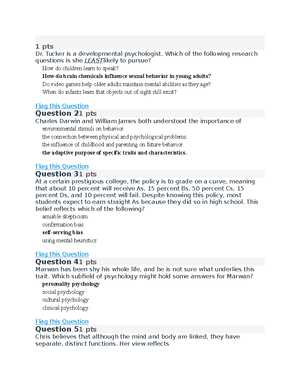
The study of human development explores how individuals change and grow over time, from infancy through adulthood and into old age. This area focuses on understanding the various factors that influence physical, cognitive, and emotional growth throughout life.
In this section, we will cover the most important ideas and theories that shape our understanding of how people develop. Whether you’re preparing for a test or simply seeking to deepen your knowledge, it’s essential to grasp the foundational concepts that guide research in this field.
Key developmental stages provide a roadmap for studying the progress of individuals at different points in life. From the early stages of childhood to the complexities of adulthood, each phase presents unique challenges and opportunities for learning.
Key Insights for Understanding Human Growth and Development
This section delves into the essential concepts required for understanding the complex processes of human growth. By familiarizing yourself with the core principles and stages, you can better grasp the critical elements that shape individual development across various life phases.
Below are some of the most important aspects to focus on when preparing for assessments related to this subject:
- Growth stages: Understanding the progression of changes in individuals from infancy to adulthood.
- Cognitive development: Recognizing how thinking, problem-solving, and memory evolve over time.
- Emotional and social development: Examining the formation of relationships, identity, and emotional regulation.
- Environmental influences: The role of family, culture, and society in shaping human behavior and development.
It’s crucial to not only memorize specific facts but also to understand the underlying theories that explain how and why individuals grow as they do. Comprehensive knowledge will help you tackle any related questions with confidence.
- Piaget’s Theory of Cognitive Development: Key stages that describe how children’s thinking evolves.
- Erikson’s Stages of Psychosocial Development: How individuals face critical challenges at various life stages.
- Vygotsky’s Sociocultural Theory: The importance of social interaction in cognitive development.
Focusing on these main theories and understanding their application to real-life situations will provide a solid foundation for answering questions on human growth and development.
Key Concepts in Human Growth and Development
To understand how individuals evolve over the course of their lives, it is crucial to familiarize yourself with the fundamental principles that explain various aspects of human growth. This section explores key ideas that help make sense of how we develop physically, cognitively, and emotionally from birth through old age.
Stages of Growth
The journey of human development can be divided into distinct stages, each with its own milestones. These stages help us understand the changes individuals experience as they mature. From early childhood to adolescence, adulthood, and aging, each period involves specific challenges and advancements that shape one’s capabilities and identity.
Influencing Factors
Numerous factors contribute to individual growth, from genetic inheritance to environmental influences. Understanding how these forces interact is vital for grasping why people develop in unique ways. Family, culture, and social contexts play pivotal roles in determining how individuals think, behave, and form relationships.
Grasping these core concepts will enable you to analyze how different elements of human life are interconnected and evolve over time, providing a comprehensive view of the development process.
Understanding Human Development Stages
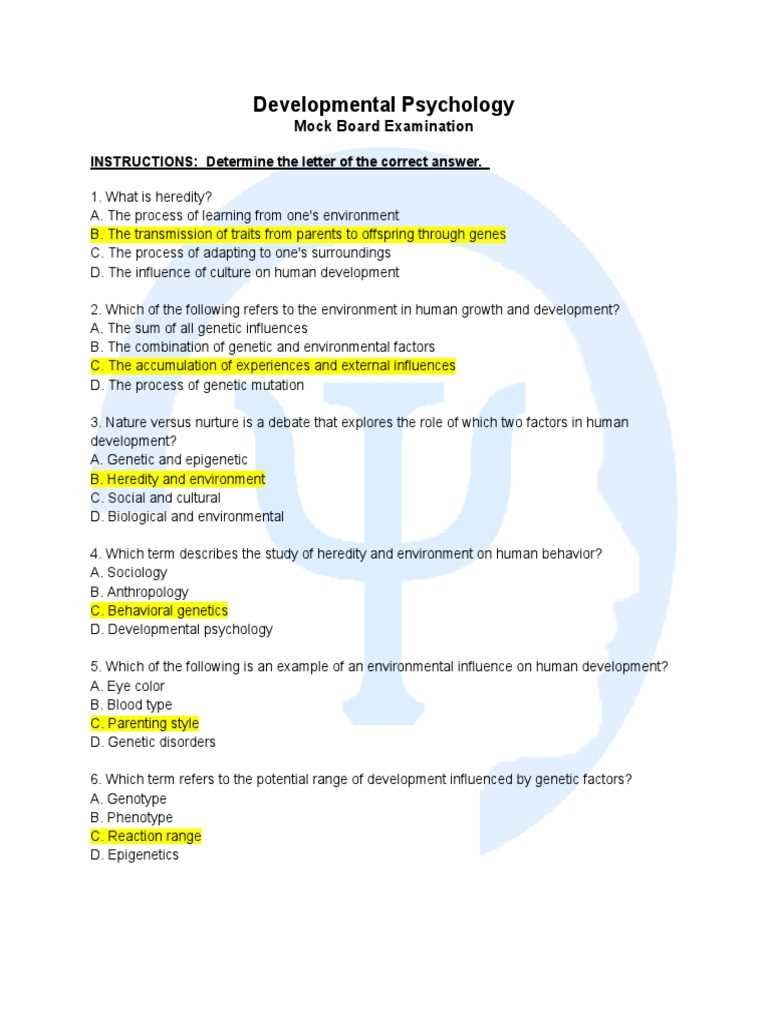
Human growth unfolds through a series of phases, each marked by significant changes in physical, emotional, and cognitive functions. These stages provide a framework for understanding how people evolve from infancy through adulthood and into old age. Each phase is distinct, presenting unique opportunities and challenges that influence an individual’s overall development.
Key Stages of Growth
Throughout life, individuals progress through several important stages, each with its own characteristics. These stages are foundational for understanding the progression of abilities, behavior, and experiences:
- Infancy: Rapid physical growth and early cognitive development.
- Childhood: Acquisition of basic motor skills, language, and social behavior.
- Adolescence: Transition to adulthood marked by emotional and cognitive maturation.
- Adulthood: Establishment of identity, relationships, and career.
- Old Age: Reflection on life, changes in physical health, and potential cognitive decline.
Factors Shaping Development
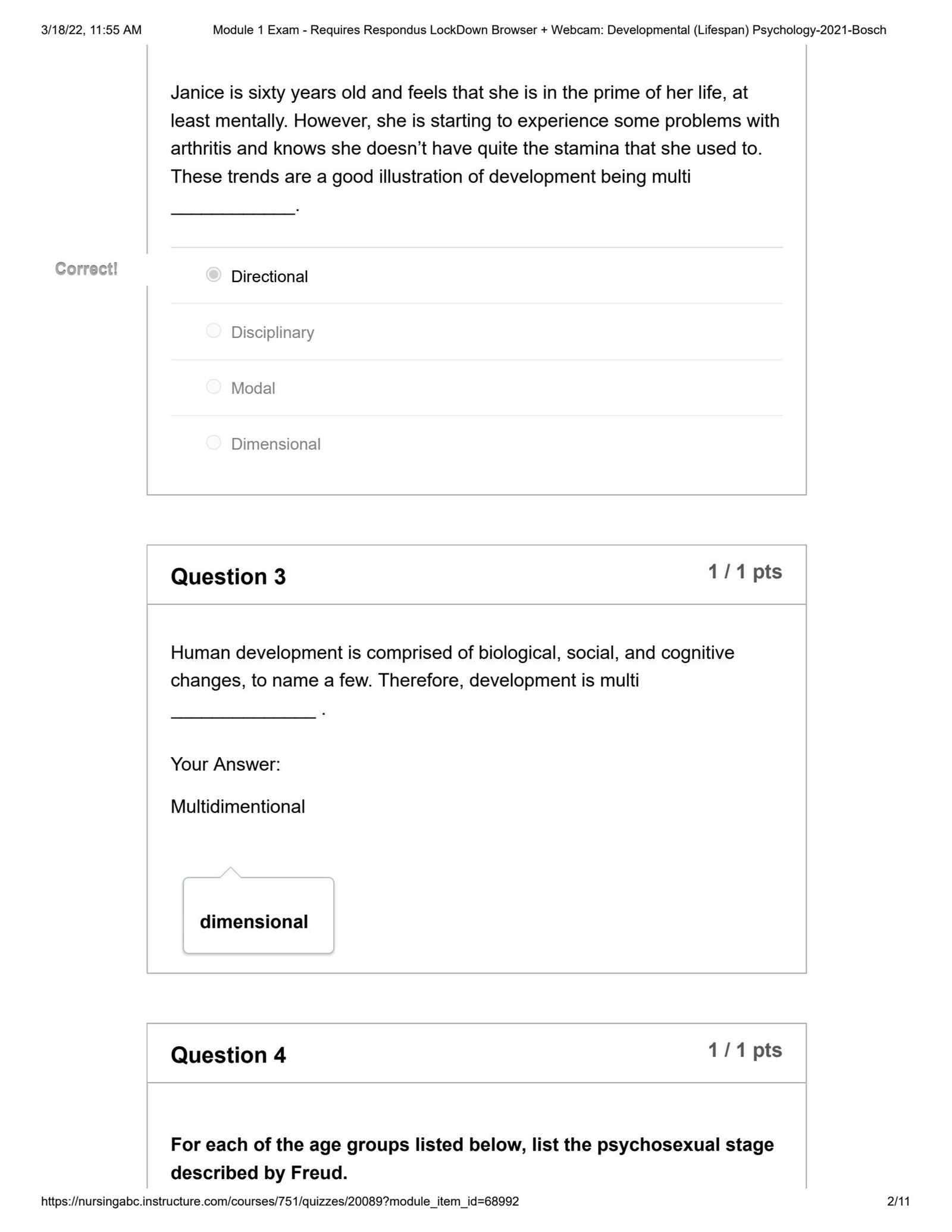
Each stage is influenced by a combination of internal and external factors. These can include genetics, family environment, culture, and personal experiences. Understanding how these forces interact helps explain why individuals develop differently, even if they share similar stages of life.
- Genetic influences: Inherited traits and predispositions.
- Environmental factors: Family dynamics, culture, and social interactions.
- Life experiences: Education, trauma, and key life events.
By studying these stages and the factors that influence them, we gain a deeper insight into the complex process of human growth and how it shapes our lives.
Important Theories in Human Growth and Development
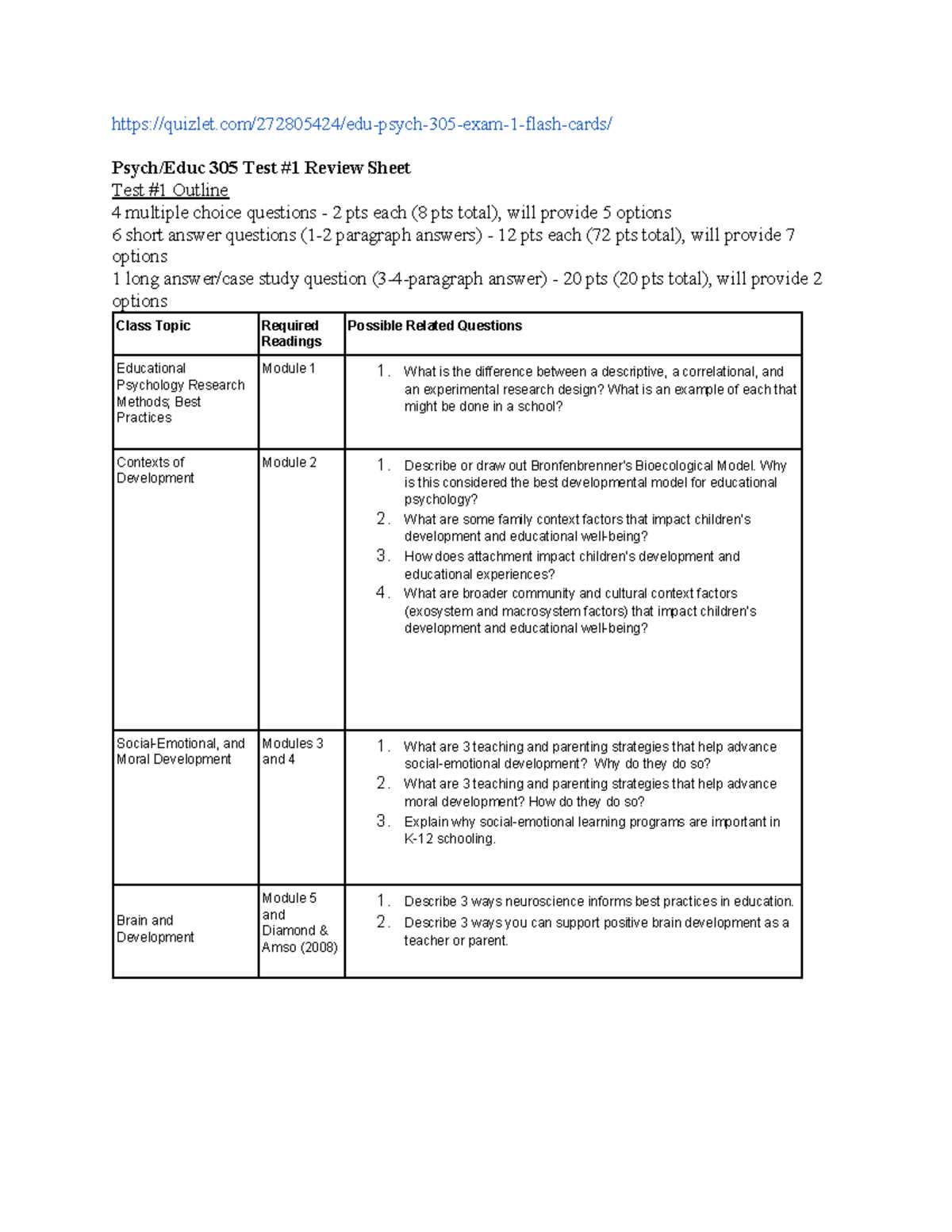
To understand the complexities of how people grow and change throughout their lives, numerous theoretical frameworks have been developed. These theories provide insight into how individuals progress physically, cognitively, and socially. They help explain the various influences that shape human behavior and development at different life stages.
Each theory presents a unique perspective, highlighting different aspects of growth, such as the role of experience, social environment, and innate abilities. Below are some of the most influential theories that continue to guide research in this field:
- Piaget’s Theory of Cognitive Development: Focuses on how children’s thinking evolves through a series of stages, from sensorimotor to formal operational reasoning.
- Erikson’s Psychosocial Stages: Describes eight key stages of development, each marked by a specific challenge that shapes an individual’s social and emotional growth.
- Vygotsky’s Sociocultural Theory: Emphasizes the importance of social interaction and culture in shaping cognitive development and learning.
- Bronfenbrenner’s Ecological Systems Theory: Highlights the multiple environmental layers, from family to society, that impact a person’s development.
By examining these theories, we can better understand the forces that influence growth, behavior, and learning. These frameworks provide the foundation for ongoing research and practical applications in various fields, including education, healthcare, and social work.
Critical Milestones in Early Childhood
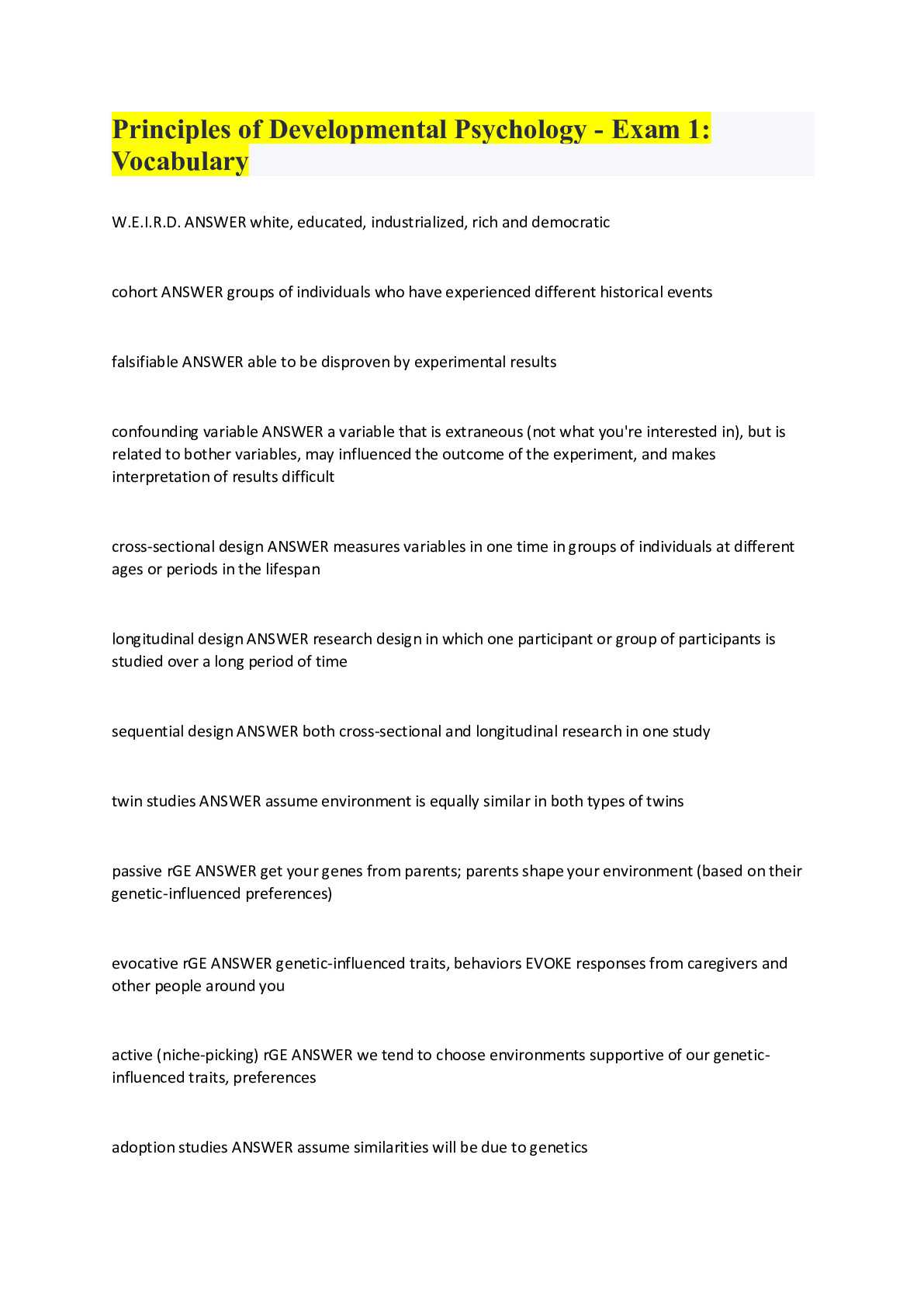
Early childhood is a period of rapid growth and change. During this time, children reach several key milestones that lay the foundation for future development. These milestones encompass a wide range of skills, from physical abilities to social and cognitive development, and are crucial for understanding how a child’s potential unfolds in the early years.
Below is a table that highlights some of the critical milestones typically observed in young children, ranging from infancy to age five:
| Age | Physical Development | Cognitive Development | Social-Emotional Development |
|---|---|---|---|
| 0-6 months | Improved motor control, lifting head, reaching for objects | Recognizes familiar faces, begins to understand cause and effect | Develops attachment to caregivers, begins to smile socially |
| 6-12 months | Sitting up, crawling, possibly standing with support | Explores objects, develops object permanence | Shows preferences for certain people, responds to emotions |
| 1-2 years | Walking independently, starting to run | Begins to use simple words, starts solving basic problems | Shows increased independence, engages in parallel play |
| 2-3 years | Climbing, jumping, fine motor skills improve | Expanding vocabulary, begins to understand simple instructions | Displays more social behaviors, such as sharing and taking turns |
| 3-5 years | Running, hopping, and more complex motor skills | Begins imaginative play, more complex problem-solving | Develops friendships, shows empathy, follows rules in play |
These milestones are not only important for tracking a child’s growth but also provide insights into the developmental processes that occur in the early years. Monitoring these stages helps identify areas where children may need additional support or intervention, ensuring a well-rounded development.
Adolescent Cognitive and Emotional Changes
The period of adolescence is marked by profound changes in both cognitive abilities and emotional responses. During these years, young individuals experience significant shifts in how they think, make decisions, and process emotions. These transformations are critical for developing a deeper understanding of the self, others, and the world around them.
In terms of cognitive development, adolescents move from concrete thinking to more abstract and complex reasoning. This shift enables them to think about hypothetical situations, evaluate multiple perspectives, and make more sophisticated judgments. Emotionally, adolescence is a time of heightened sensitivity and increased intensity in feelings, as well as the development of greater self-awareness and identity.
Cognitive Changes
- Abstract Thinking: Adolescents begin to understand concepts that are not directly tied to physical experiences, allowing them to think about possibilities, future outcomes, and theoretical ideas.
- Improved Problem Solving: With more advanced thinking abilities, teens develop better strategies for solving complex problems, moving beyond simple trial-and-error methods.
- Metacognition: Adolescents gain the ability to reflect on their own thinking processes, which enhances their ability to evaluate their knowledge and strategies.
- Formal Operational Thought: As adolescents enter this stage, they start to think logically about abstract concepts, such as justice, morality, and personal values.
Emotional Changes
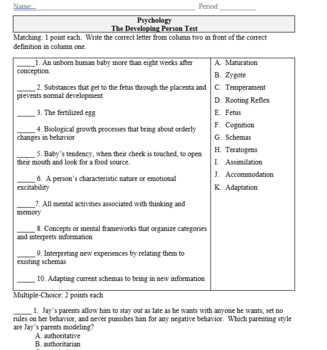
- Identity Formation: One of the most significant emotional changes during adolescence is the process of developing a stable sense of self, which includes exploring personal values, beliefs, and goals.
- Increased Emotional Sensitivity: Adolescents often experience intense emotions and mood swings as they navigate their growing independence and social relationships.
- Peer Influence: The influence of peers becomes particularly strong during adolescence, often affecting emotions, behavior, and decision-making.
- Search for Autonomy: Teens seek greater independence from parents and caregivers, leading to emotional struggles as they balance dependence and autonomy.
Understanding these cognitive and emotional shifts helps explain the sometimes unpredictable behavior of adolescents. These changes are essential for the development of mature reasoning, emotional regulation, and social interaction skills.
Factors Influencing Developmental Outcomes

The trajectory of human growth is shaped by a multitude of factors that can either promote or hinder progress in various areas, including physical health, cognitive abilities, and emotional well-being. These influences often interact in complex ways, creating unique developmental pathways for each individual. Understanding the key factors that affect growth helps in identifying potential challenges and opportunities for intervention.
From genetic predispositions to environmental conditions, a wide range of elements contribute to how individuals develop over time. Some factors provide a foundation for healthy growth, while others may pose obstacles that require additional support or guidance. Below are some of the most influential factors that shape developmental outcomes:
Biological and Genetic Factors
- Genetics: Inherited traits from parents, including physical characteristics, temperament, and predispositions to certain health conditions, have a profound impact on development.
- Brain Development: The growth and maturation of the brain are critical to cognitive and emotional functioning, influencing everything from memory and learning to emotional regulation.
- Physical Health: The presence or absence of chronic illnesses, nutrition, and prenatal conditions all play a role in shaping a person’s developmental path.
Environmental and Social Factors
- Family Environment: The quality of the home environment, including parental involvement, support, and stability, significantly influences emotional and social development.
- Socioeconomic Status: Access to resources such as education, healthcare, and social services can either enhance or limit developmental opportunities.
- Peer Relationships: Positive or negative interactions with peers contribute to the development of social skills, self-esteem, and emotional resilience.
Psychosocial and Cultural Influences
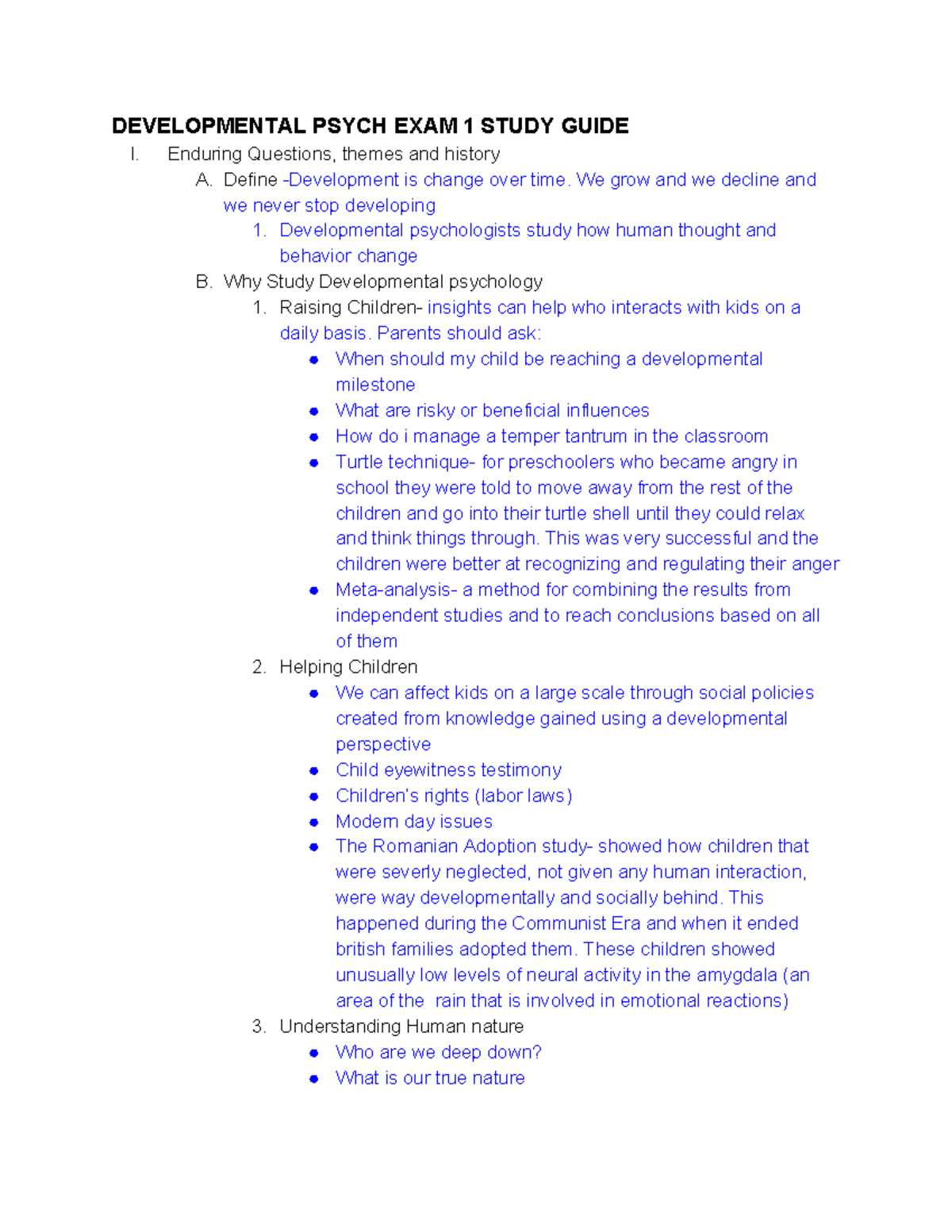
- Cultural Background: Cultural values and norms shape individuals’ beliefs, behaviors, and ways of thinking, influencing their development across various domains.
- Life Experiences: Significant events, such as trauma or positive experiences like education and travel, can have lasting effects on mental and emotional growth.
- Community Support: Access to supportive communities, whether through school, religion, or social groups, fosters positive social and emotional outcomes.
By examining how these factors interact, we can better understand the complex nature of human growth and development. Identifying both strengths and challenges in each area allows for more effective interventions and support strategies to foster well-rounded development.
Development of Personality Across Lifespan
Throughout the lifespan, an individual’s personality evolves through various stages, influenced by both innate characteristics and external experiences. These shifts are shaped by biological, social, and environmental factors, as well as personal choices and life events. Understanding how personality changes over time offers valuable insights into how individuals adapt to challenges, form relationships, and express their emotions and behaviors.
Personality is not static; it is shaped by a complex interplay of factors throughout different life stages. From childhood to adulthood and into old age, the traits that define a person’s temperament and interpersonal style continue to evolve. Below is a table outlining key stages and changes in personality development across the lifespan:
| Age Range | Key Traits and Changes | Influencing Factors |
|---|---|---|
| Infancy to Early Childhood | Initial temperament, attachment styles, social interactions with primary caregivers | Genetics, parent-child bonding, early social experiences |
| Childhood (6-12 years) | Emergence of self-concept, development of empathy, cooperation with peers | Family influence, friendships, educational environment |
| Adolescence (13-18 years) | Identity exploration, increased self-consciousness, development of values and beliefs | Peer relationships, identity crises, social pressures |
| Early Adulthood (19-40 years) | Increased independence, career development, forming intimate relationships | Work experiences, romantic relationships, social responsibilities |
| Middle Adulthood (41-65 years) | Stability in personal identity, focus on generativity, changes in priorities | Family dynamics, career achievement, midlife transitions |
| Late Adulthood (65+ years) | Reflection on life, acceptance of aging, changes in social roles and expectations | Retirement, health challenges, relationships with family and friends |
As this table shows, personality traits continue to evolve and shift at different life stages. Early childhood experiences, adolescent challenges, and adult responsibilities all play pivotal roles in shaping who we become. Understanding these transitions helps to recognize the fluid nature of personality and the factors that guide it over time.
Impact of Nature vs Nurture Debate
The longstanding debate between the influence of genetic inheritance and environmental factors on human development has shaped much of our understanding of individual growth. This discussion focuses on whether traits such as intelligence, personality, and behavior are primarily determined by our genetic makeup or by the experiences and conditions we encounter throughout our lives. The balance between these forces is complex, with both nature and nurture playing significant roles in shaping who we become.
While genes provide the foundational blueprint for physical and psychological traits, the environment in which a person grows up can modify or enhance these characteristics. This section explores the implications of both aspects and how they interact to influence development over the course of a lifetime.
Genetic Factors and Inherited Traits
Genetics offers a powerful influence on an individual’s characteristics. Traits like height, eye color, and susceptibility to certain medical conditions are inherited through genetic material. In addition, psychological traits such as temperament, cognitive abilities, and even predispositions to mental health disorders can have genetic underpinnings. Research has shown that identical twins, even when raised apart, often display strikingly similar behaviors, suggesting that genes can have a significant role in shaping personality and cognitive abilities.
Environmental Influences and Life Experiences
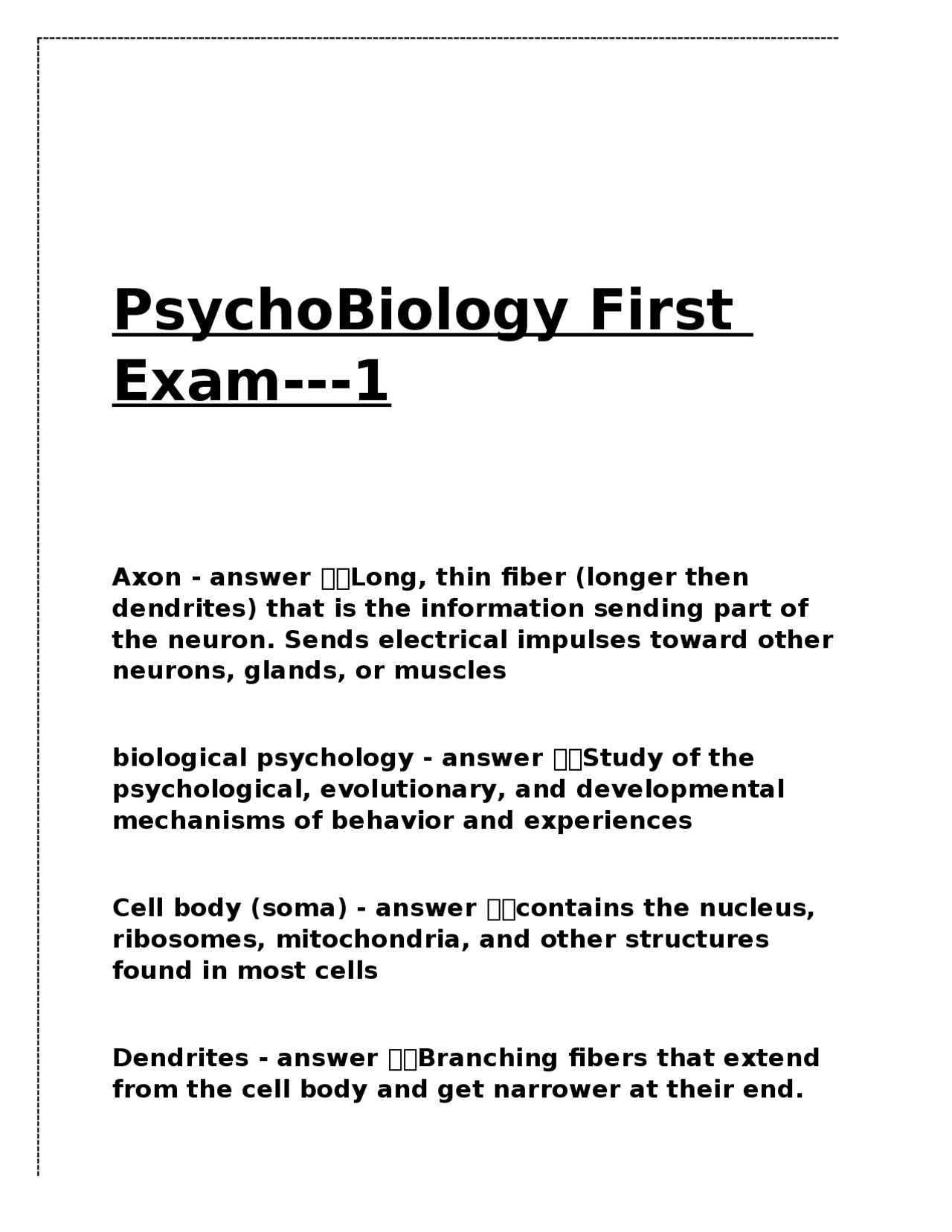
On the other hand, the environment – including family upbringing, culture, education, and social interactions – plays a critical role in shaping an individual’s development. Early childhood experiences, parental involvement, and societal influences help form cognitive patterns, emotional regulation, and social skills. Studies have shown that enriching environments can lead to better cognitive outcomes, while neglect or trauma can hinder a person’s emotional and intellectual growth.
Rather than viewing nature and nurture as opposing forces, it is essential to understand how they work together in shaping a person’s development. Both genetics and environmental factors contribute to the intricate process of becoming who we are.
Developmental Theories and Modern Research
The study of human growth and behavior has been shaped by a variety of theories that attempt to explain how individuals evolve physically, cognitively, and emotionally over time. These theoretical frameworks provide a lens through which researchers and practitioners understand the complexities of human development. Over the years, advances in research methods and technology have enabled a deeper exploration of these concepts, leading to new insights and applications.
While classical theories have laid the foundation for understanding human growth, contemporary research continues to refine and challenge these models. Modern studies, often supported by sophisticated tools and longitudinal data, provide a more nuanced understanding of how different factors–both internal and external–contribute to developmental outcomes. Below are some key theories that have shaped our understanding, alongside how recent research has expanded on these ideas.
Key Developmental Theories
Freud’s Psychosexual Stages: Sigmund Freud’s model of psychosexual development emphasized how early childhood experiences shape adult personality. Although controversial, this theory highlighted the importance of unconscious drives and the influence of early experiences on later behavior.
Erikson’s Psychosocial Stages: Erik Erikson expanded upon Freud’s ideas with a focus on social relationships and identity formation. His theory outlines eight stages of human development, each characterized by a central conflict that must be resolved for healthy psychological development.
Piaget’s Cognitive Development: Jean Piaget proposed that children move through four stages of cognitive development, with each stage representing a different way of thinking and understanding the world. His work laid the groundwork for understanding how intelligence evolves over time.
Modern Research and Advances
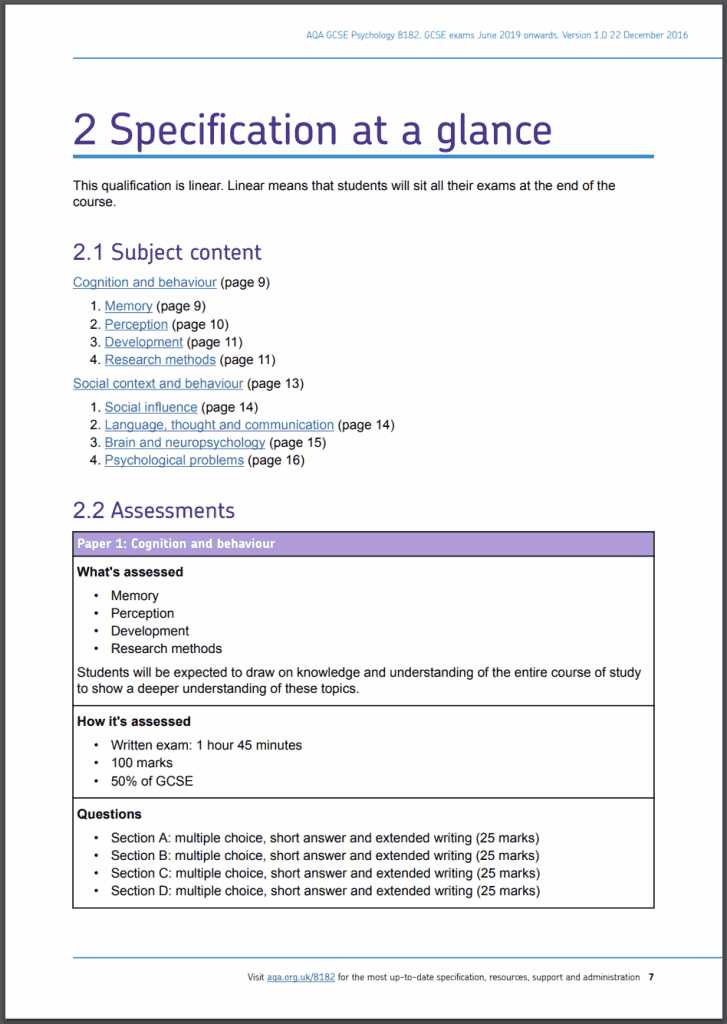
Contemporary research has built upon these early theories to offer a more comprehensive view of human growth. Studies in neuroscience, genetics, and behavioral science have provided new insights into the biological underpinnings of development. For example, advancements in brain imaging have allowed researchers to examine how neural networks change throughout life, shedding light on how cognitive and emotional development is influenced by both genetics and experience.
Additionally, modern research has focused on the role of culture, social contexts, and individual experiences in shaping development. Longitudinal studies, which track individuals over extended periods, have provided evidence that development is not as linear as once believed. Instead, it is dynamic and influenced by a variety of factors, including life transitions, societal changes, and personal choices.
In conclusion, the integration of classical theories with modern research techniques continues to enhance our understanding of how humans grow and change across the lifespan. These insights not only contribute to academic knowledge but also inform practical applications in education, healthcare, and social services.
Assessing Cognitive Development in Infants
Understanding how infants develop cognitive abilities is essential for both research and practical applications in early childhood education and healthcare. Infants undergo rapid changes in their ability to perceive, think, and understand the world around them. Various methods are used to assess these abilities, providing valuable insights into the early stages of intellectual growth. These assessments help identify any developmental concerns and guide appropriate interventions when necessary.
Observing cognitive milestones, such as memory, problem-solving, and attention, can provide a clear picture of an infant’s mental development. Researchers have developed a range of techniques to measure these skills in very young children, often relying on indirect methods since infants cannot verbally express their thoughts. Below are some common approaches to assessing cognitive abilities in infants:
Common Methods of Assessment
- Behavioral Observations: Researchers closely observe an infant’s behavior during tasks that measure attention, memory, and problem-solving. For instance, infants may be shown a toy and then have it hidden, and their ability to remember the toy’s location is used as an indicator of memory development.
- Visual Preference Paradigm: This method measures an infant’s preference for looking at different objects or images. By tracking eye movement and the amount of time spent looking at certain stimuli, researchers can infer preferences, visual discrimination, and even basic cognitive processing.
- Habituation-Dishabituation: Infants tend to become less responsive to a stimulus after repeated exposure, known as habituation. When a new stimulus is introduced, their increased attention indicates that they can detect differences in their environment, which suggests cognitive processing and learning.
- Neuroimaging Techniques: Although more common in older children, methods like near-infrared spectroscopy (NIRS) are beginning to be used to assess brain activity in infants. These techniques can provide insight into how the brain processes stimuli and can help researchers understand cognitive development from a neurological perspective.
Understanding Cognitive Milestones
As infants grow, they pass through various cognitive milestones that indicate their developing mental abilities. Some key milestones include:
- 1-2 Months: Infants begin to follow moving objects with their eyes and show interest in faces.
- 3-4 Months: Infants start to recognize familiar faces and voices, indicating the beginning of memory and recognition.
- 6-9 Months: Infants develop more sophisticated object permanence, realizing that objects continue to exist even when out of sight.
- 12 Months: Infants begin simple problem-solving tasks, such as using tools to reach objects or imitating actions.
These milestones provide a benchmark for evaluating cognitive development and can help guide interventions if delays or concerns are detected. By understanding the typical trajectory of cognitive growth, parents, caregivers, and professionals can better support infants in their early learning experiences.
Challenges in Adult Development and Aging

As individuals progress through adulthood, they encounter a range of challenges that affect their physical, mental, and emotional well-being. Aging is a complex process that involves a variety of changes in health, relationships, and cognitive abilities. These changes often require adaptation to new life circumstances, and can have a significant impact on overall life satisfaction. Understanding the challenges that adults face as they age is crucial for promoting healthy aging and addressing potential issues early on.
Throughout adulthood, individuals may experience both positive and negative changes. While some adults may find fulfillment in career achievements or personal growth, others may struggle with health problems, retirement, or emotional adjustments. The following are key areas of challenge that adults often encounter as they age:
Physical Health Challenges
- Chronic Illnesses: As individuals age, the likelihood of developing chronic health conditions such as heart disease, diabetes, or arthritis increases. Managing these conditions can require ongoing medical care, medication, and lifestyle adjustments.
- Loss of Mobility: Physical decline in muscle strength, flexibility, and balance can lead to difficulties in movement. This can limit independence and increase the risk of falls and injuries.
- Vision and Hearing Impairment: Age-related sensory declines, such as presbyopia (difficulty focusing on nearby objects) and hearing loss, can impact daily activities and social interactions.
Cognitive and Emotional Changes
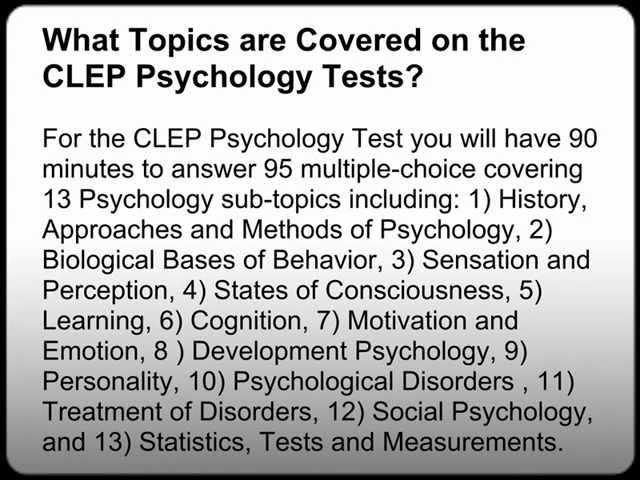
- Cognitive Decline: Although not all individuals experience significant cognitive decline, some may struggle with memory loss, slower processing speeds, and challenges with complex problem-solving tasks. This can affect work performance and daily functioning.
- Emotional Adjustment: The emotional challenges of aging include coping with the loss of loved ones, adjusting to retirement, or dealing with feelings of isolation. These changes can lead to depression, anxiety, or a sense of purposelessness.
- Identity and Self-Perception: As people age, they may question their identity or place in society, especially if they are no longer involved in their previous roles, such as being a parent, spouse, or employee.
By understanding these common challenges, adults can better prepare for the changes that come with aging, and caregivers and healthcare providers can offer more targeted support to improve quality of life. Healthy lifestyle choices, mental health support, and a strong social network are essential in managing these challenges effectively.
The Role of Social Environment in Growth
The surrounding environment plays a crucial role in shaping an individual’s development throughout life. From infancy to adulthood, the social interactions and support systems individuals engage with significantly influence their cognitive, emotional, and social growth. The people we interact with, the communities we belong to, and the broader societal structures we are part of can all contribute to our sense of self and the way we navigate life’s challenges. Understanding how different social factors impact personal development is essential for fostering positive growth in various life stages.
Our relationships, whether with family, friends, or colleagues, often provide the foundation for emotional support and social learning. Additionally, societal norms, cultural expectations, and educational systems influence behavior, values, and worldviews. The following aspects highlight the importance of the social environment in shaping individual growth:
Family and Early Relationships
- Parental Influence: The role of parents and caregivers is foundational in the early years of life. Their emotional warmth, responsiveness, and support contribute to secure attachment, which affects future relationships and emotional stability.
- Sibling Dynamics: Sibling relationships provide an important space for social learning and emotional development. These interactions help individuals develop skills like empathy, conflict resolution, and cooperation.
Community and Peer Influence

- Peer Interactions: As children and adolescents grow, peers become a major influence on behavior and decision-making. Friendships and group dynamics teach social norms, identity, and collaboration.
- Community Support: Being part of a supportive community offers individuals a sense of belonging and security. Whether through local organizations, religious groups, or social networks, these connections provide opportunities for personal growth and shared learning experiences.
The social environment also impacts the way individuals cope with stress, adapt to change, and achieve their personal goals. Positive social support systems help individuals build resilience, whereas toxic or neglectful environments can have lasting negative effects. By promoting healthy, nurturing relationships and creating supportive social structures, individuals and communities can foster greater well-being and personal success.
Research Methods in Developmental Psychology
Understanding how individuals grow and change over time requires the use of various research methods to collect data, analyze patterns, and draw meaningful conclusions. These methods help researchers study the complexities of human development across different life stages. By using appropriate research tools, scholars can explore the underlying factors that influence behaviors, cognitive processes, and emotional growth.
Different research designs are used to examine human development from diverse angles. Some methods focus on observing changes in individuals over time, while others gather information through surveys, interviews, or experimental settings. The choice of method depends on the research question and the specific developmental aspects being studied. Below are the most commonly used research methods:
- Longitudinal Studies: These studies track the same individuals or groups over a long period, allowing researchers to observe how certain traits or behaviors evolve over time. Longitudinal research is particularly useful for studying developmental changes and trends.
- Cross-Sectional Studies: Cross-sectional studies compare different groups of individuals at a single point in time. This method allows for the examination of differences across various age groups, helping researchers understand how development may vary at different stages.
- Experimental Studies: Experimental research involves manipulating variables to assess their impact on specific outcomes. These studies provide insights into cause-and-effect relationships, which are essential for understanding how certain factors influence development.
- Case Studies: A case study focuses on an in-depth examination of a single individual or a small group. This method provides detailed information on unique developmental experiences, often leading to valuable insights into specific conditions or behaviors.
- Survey and Questionnaire Studies: Surveys and questionnaires are widely used to gather information from large groups. These methods are efficient for collecting data on attitudes, beliefs, and behaviors across a wide population, offering valuable insights into social and emotional development.
Each of these research methods has its strengths and limitations. By combining different approaches, researchers can create a comprehensive understanding of how humans develop and adapt throughout their lives. The careful application of these methods helps ensure that findings are both reliable and valid, contributing to our overall knowledge of human growth and change.
Memory and Learning in Different Stages
Memory and the ability to acquire new information are fundamental to human development, with these cognitive processes evolving throughout various life stages. From early childhood to adulthood, how we retain, recall, and apply knowledge changes in significant ways. Understanding how memory and learning abilities progress can provide valuable insights into how individuals adapt to new experiences and challenges over time.
In early stages of life, the brain is highly malleable, and learning occurs rapidly through sensory experiences and basic interactions. As individuals age, their memory systems become more complex, involving higher-level cognitive functions such as abstract thinking and problem-solving. During adulthood, cognitive processes such as memory retrieval and learning efficiency may decline, though individuals often adapt by relying on experience and developed strategies.
The table below highlights some key differences in memory and learning abilities at different stages of life:
| Stage of Life | Memory Characteristics | Learning Abilities |
|---|---|---|
| Infancy and Early Childhood | Rapid memory formation; limited long-term retention | Learning through sensory input and repetition |
| Childhood | Improved recall and categorization; growing long-term memory | Increased ability to learn from structured environments (e.g., school) |
| Adolescence | Advanced memory strategies (e.g., chunking); emotional memory enhancement | Enhanced ability to process complex information and abstract concepts |
| Adulthood | Stable long-term memory but possible decline in short-term recall | Learning often relies on experience and knowledge from past years |
| Older Adulthood | Increased difficulty with recall, particularly of new information | Learning may slow down, but past experiences and skills remain strong |
By recognizing these changes, individuals can adopt strategies to optimize their learning and memory at each stage. For example, using mnemonic devices, consistent practice, and staying mentally active can help maintain cognitive function, regardless of age. Memory and learning are not static, and understanding how they evolve allows for better support and adaptation across the lifespan.
Preparing for Your Developmental Psychology Exam
Effective preparation for any assessment requires a comprehensive understanding of key concepts, as well as strategies to recall and apply information efficiently. When it comes to evaluating growth patterns, cognitive development, and behavioral changes over time, it is important to review both theoretical frameworks and practical applications. Proper study techniques not only help in mastering the material but also boost confidence for tackling various question formats on the test.
Start by reviewing the main theories and milestones in human development, making sure to focus on the distinct stages and the factors that influence change. Create a study schedule that allocates time to each area, and incorporate active recall techniques such as flashcards or self-quizzing to reinforce learning. It is equally essential to practice with past papers or sample questions to familiarize yourself with the exam format and identify any gaps in knowledge.
Additionally, group study sessions can be beneficial for discussing challenging topics with peers. Explaining complex ideas to others can help clarify your understanding and reinforce memory. Finally, ensure that you are well-rested and manage your time wisely during the exam to approach each question with a clear and focused mind.